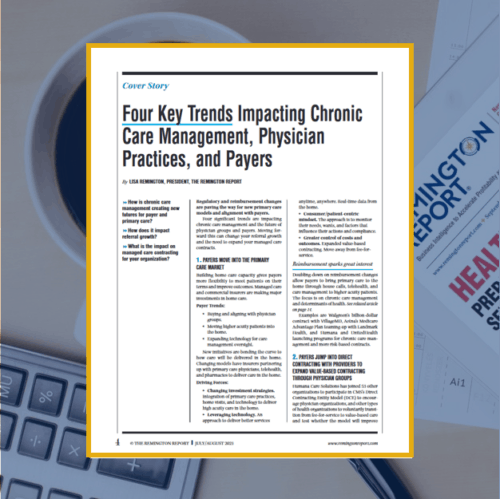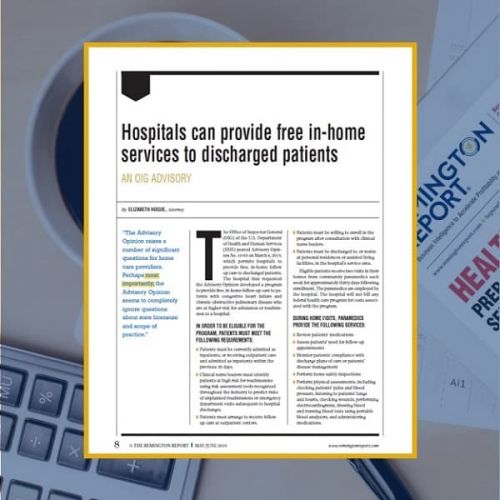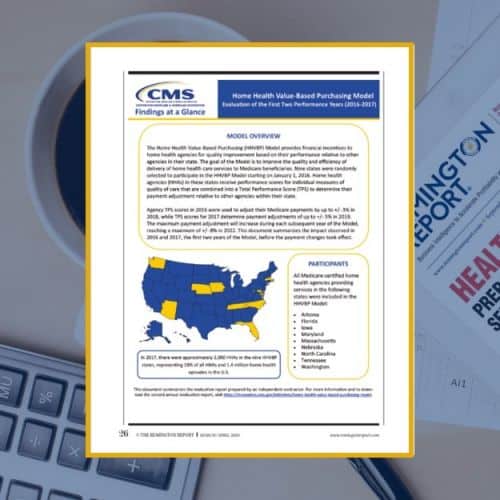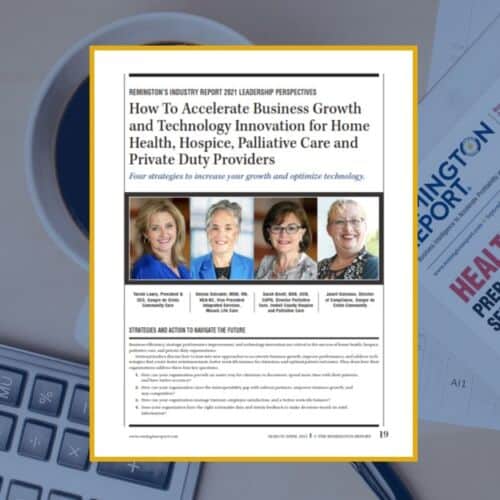-
 The Office of Inspector General (OIG) of the U.S. Department of Health and Human Services (HHS), the primary enforcer of fraud and abuse prohibitions, has issued its annual recommendations that, if implemented, will likely affect HHS programs positively in terms of cost savings, program effectiveness and efficiency, and public health and safety. This article is free to 1-Year Classic and 2-Year Premium subscribers.
The Office of Inspector General (OIG) of the U.S. Department of Health and Human Services (HHS), the primary enforcer of fraud and abuse prohibitions, has issued its annual recommendations that, if implemented, will likely affect HHS programs positively in terms of cost savings, program effectiveness and efficiency, and public health and safety. This article is free to 1-Year Classic and 2-Year Premium subscribers. -
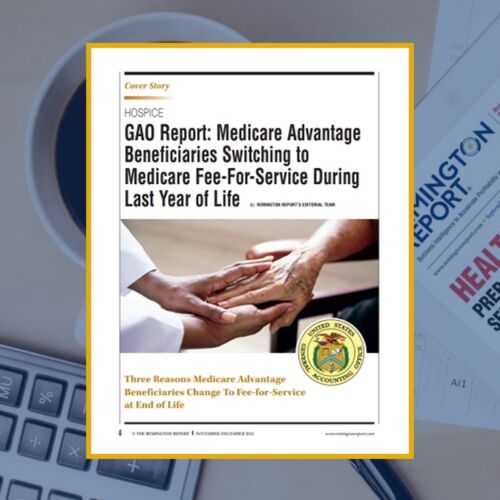 Medicare Advantage beneficiaries are switching to Medicare Fee-for-Service during their last year of life according to a Government Accountability Office study. The federal government would have saved $912 million during 2016 and 2017 had fewer Medicare Advantage enrollees opted into traditional Medicare during their last year of life, the GAO estimates. This article is free to 1-Year Classic and 2-Year Premium subscribers.
Medicare Advantage beneficiaries are switching to Medicare Fee-for-Service during their last year of life according to a Government Accountability Office study. The federal government would have saved $912 million during 2016 and 2017 had fewer Medicare Advantage enrollees opted into traditional Medicare during their last year of life, the GAO estimates. This article is free to 1-Year Classic and 2-Year Premium subscribers. -
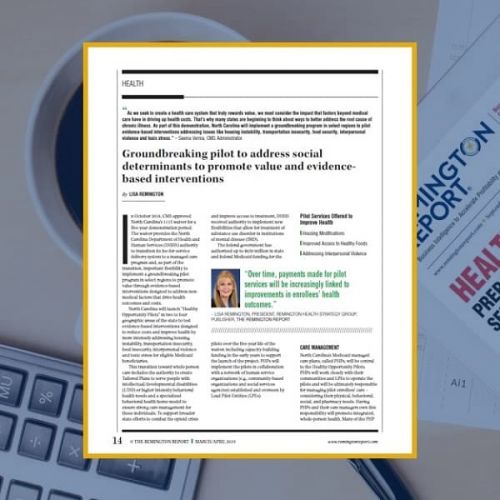 North Carolina will implement a groundbreaking program in select regions to pilot evidence-based interventions addressing issues like housing instability, transportation insecurity, food security, interpersonal violence and toxic stress. This article is free to 1-Year Classic and 2-Year Premium subscribers.
North Carolina will implement a groundbreaking program in select regions to pilot evidence-based interventions addressing issues like housing instability, transportation insecurity, food security, interpersonal violence and toxic stress. This article is free to 1-Year Classic and 2-Year Premium subscribers. -
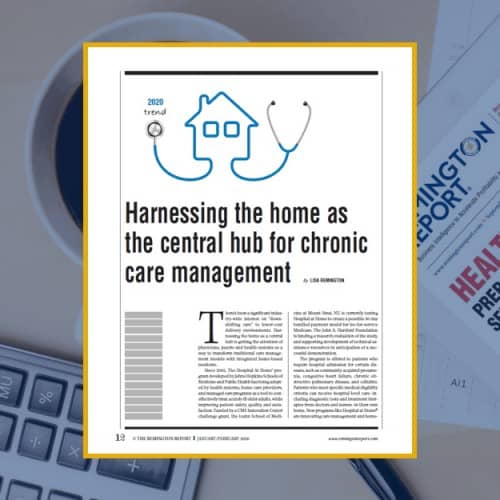 There?s been a significant industry-wide interest on ?downshifting care? to lower-cost delivery? environments. Harnessing the home as a?central hub is getting the attention of physicians, payers and health systems as a way to transform traditional care management models with integrated home-based medicine. This article is free to 1-Year Classic and 2-Year Premium subscribers.
There?s been a significant industry-wide interest on ?downshifting care? to lower-cost delivery? environments. Harnessing the home as a?central hub is getting the attention of physicians, payers and health systems as a way to transform traditional care management models with integrated home-based medicine. This article is free to 1-Year Classic and 2-Year Premium subscribers. -
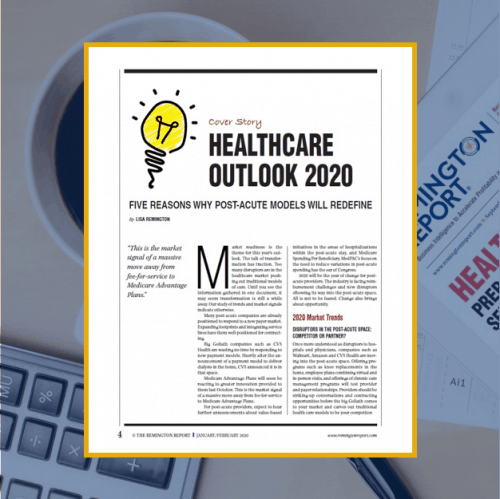 Market readiness is the theme for this year?s outlook. The talk of transformation has traction. Too many disruptors are in the healthcare market pushing out traditional models of care. Until you see the information gathered in one document, it may seem transformation is still a while away. Our study of trends and market signals indicate otherwise. This article is free to 1-Year Classic and 2-Year Premium subscribers.
Market readiness is the theme for this year?s outlook. The talk of transformation has traction. Too many disruptors are in the healthcare market pushing out traditional models of care. Until you see the information gathered in one document, it may seem transformation is still a while away. Our study of trends and market signals indicate otherwise. This article is free to 1-Year Classic and 2-Year Premium subscribers. -
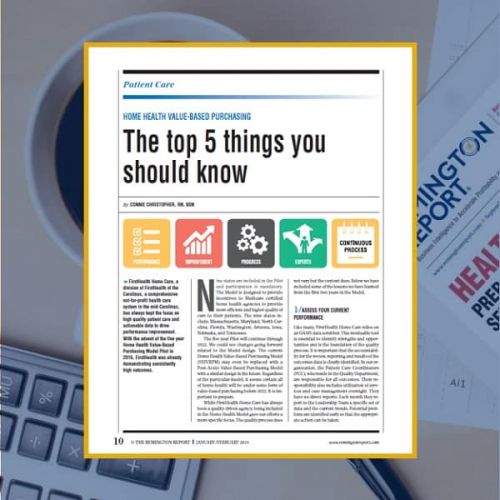 FirstHealth Home Care, a division of FirstHealth of the Carolinas, a comprehensive not-for-profit healthcare system in the mid-Carolinas, has always kept the focus on high quality patient care and actionable data to drive performance improvement. With the advent of the five year Home Health Value-Based Purchasing Model Pilot in 2016, FirstHealth was already demonstrating consistently high outcomes. This article is free to 1-Year Classic and 2-Year Premium subscribers.
FirstHealth Home Care, a division of FirstHealth of the Carolinas, a comprehensive not-for-profit healthcare system in the mid-Carolinas, has always kept the focus on high quality patient care and actionable data to drive performance improvement. With the advent of the five year Home Health Value-Based Purchasing Model Pilot in 2016, FirstHealth was already demonstrating consistently high outcomes. This article is free to 1-Year Classic and 2-Year Premium subscribers. -
 Adam Boehler left his position as the deputy administrator and director of CMS and Medicaid Innovation (CMMI). His position at CMMI was important to home and community-based providers. His work created models to pay primary care physicians based on value, tie prices of drugs administered in a doctor's office to the amount other countries pay, and a drive to move?more people to get dialysis in their homes. This article is free to 1-Year Classic and 2-Year Premium subscribers.
Adam Boehler left his position as the deputy administrator and director of CMS and Medicaid Innovation (CMMI). His position at CMMI was important to home and community-based providers. His work created models to pay primary care physicians based on value, tie prices of drugs administered in a doctor's office to the amount other countries pay, and a drive to move?more people to get dialysis in their homes. This article is free to 1-Year Classic and 2-Year Premium subscribers. -
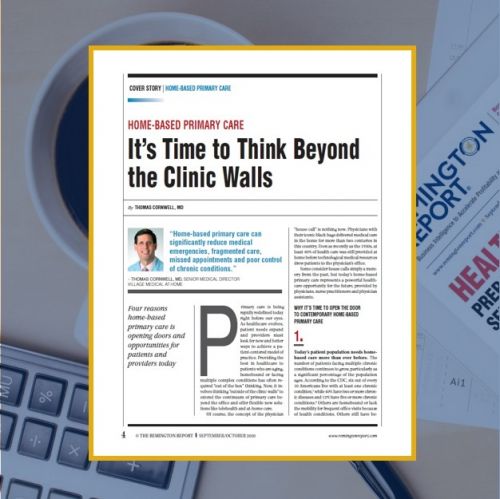 Primary care is being rapidly redefined today right before our eyes. As healthcare evolves, patient needs expand and providers must look for new and better ways to achieve a patient-centered model of practice. Read the four reasons home-based primary care is opening doors and opportunities for patients and providers today. This article is free to 1-Year Classic and 2-Year Premium subscribers.
Primary care is being rapidly redefined today right before our eyes. As healthcare evolves, patient needs expand and providers must look for new and better ways to achieve a patient-centered model of practice. Read the four reasons home-based primary care is opening doors and opportunities for patients and providers today. This article is free to 1-Year Classic and 2-Year Premium subscribers. -
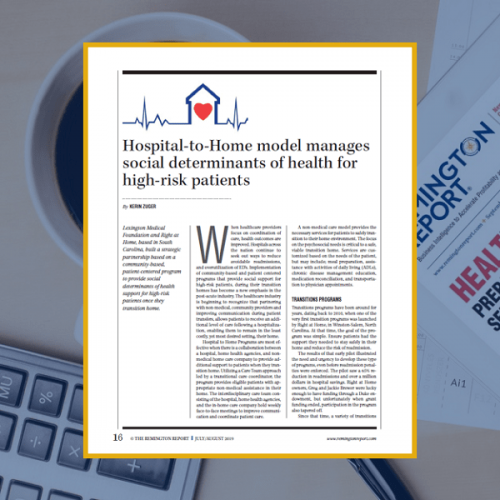 Lexington Medical Foundation and Right at Home, based in South Carolina, built a strategic partnership based on a community-based, patient-centered program to provide social determinants of health support for high-risk patients once they transition home. This article is free to 1-Year Classic and 2-Year Premium subscribers.
Lexington Medical Foundation and Right at Home, based in South Carolina, built a strategic partnership based on a community-based, patient-centered program to provide social determinants of health support for high-risk patients once they transition home. This article is free to 1-Year Classic and 2-Year Premium subscribers. -
 The invisible technology boundaries expand the rules of who can offer care in the home, how they will be paid, and it creates a less restrictive policy environment to deliver care at home. The opportunity to reshape care delivery and create a more efficient and cost-effective healthcare system is achievable because of the acceleration and adoption of technology. This article is free to 1-Year Classic and 2-Year Premium subscribers.
The invisible technology boundaries expand the rules of who can offer care in the home, how they will be paid, and it creates a less restrictive policy environment to deliver care at home. The opportunity to reshape care delivery and create a more efficient and cost-effective healthcare system is achievable because of the acceleration and adoption of technology. This article is free to 1-Year Classic and 2-Year Premium subscribers. -
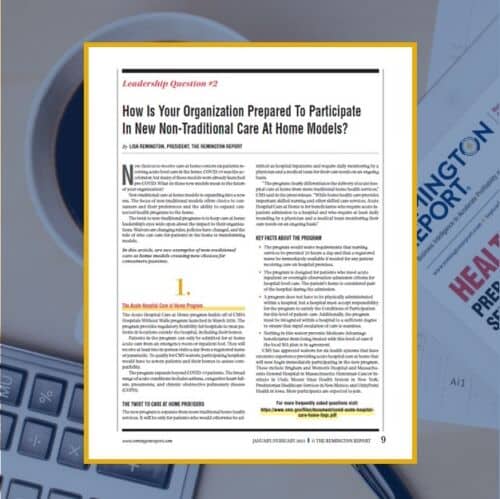 New choices to receive care at home centers on patients receiving acute level care in the home. Non-traditional care at home models is expanding into a new era. The twist to non-traditional programs is to keep care at home leadership?s eyes wide open about the impact to their organizations. Waivers are changing rules, policies have changed, and the role of who can care for patients in the home is transforming models. This article is free to 1-Year Classic and 2-Year Premium subscribers.
New choices to receive care at home centers on patients receiving acute level care in the home. Non-traditional care at home models is expanding into a new era. The twist to non-traditional programs is to keep care at home leadership?s eyes wide open about the impact to their organizations. Waivers are changing rules, policies have changed, and the role of who can care for patients in the home is transforming models. This article is free to 1-Year Classic and 2-Year Premium subscribers. -
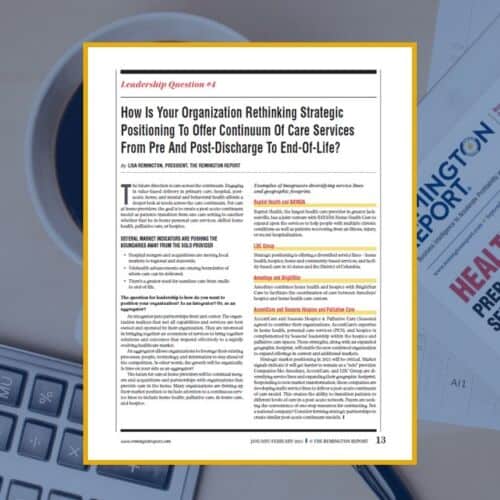 The question for leadership is how do you want to position your organization? As an integrator? Or as an aggregator? For care at home providers, the goal is to create a post-acute continuum model as patients transition from one care setting to another whether that be in-home personal care services, skilled home health, palliative care, or hospice. This article is free to 1-Year Classic and 2-Year Premium subscribers.
The question for leadership is how do you want to position your organization? As an integrator? Or as an aggregator? For care at home providers, the goal is to create a post-acute continuum model as patients transition from one care setting to another whether that be in-home personal care services, skilled home health, palliative care, or hospice. This article is free to 1-Year Classic and 2-Year Premium subscribers. -
 This is the second article in series to discuss how to promote the growth of in-home community-based organizations and accelerate relationships with payers. The first article published in The Remington Report's July/August issue, pages 4-8, focused on the home health aide workforce: How Real Time Actionable Data Leverages New Value For Home Health Aides and Stakeholders. This article is free to 1-Year Classic and 2-Year Premium subscribers.
This is the second article in series to discuss how to promote the growth of in-home community-based organizations and accelerate relationships with payers. The first article published in The Remington Report's July/August issue, pages 4-8, focused on the home health aide workforce: How Real Time Actionable Data Leverages New Value For Home Health Aides and Stakeholders. This article is free to 1-Year Classic and 2-Year Premium subscribers. -
 About two-thirds of hospital readmission costs were higher than their initial admission costs for common diagnoses in 2016, according to a Healthcare Cost and Utilization Project Statistical Brief released by the Agency for Healthcare Research and Quality. This article is free to 1-Year Classic and 2-Year Premium subscribers.
About two-thirds of hospital readmission costs were higher than their initial admission costs for common diagnoses in 2016, according to a Healthcare Cost and Utilization Project Statistical Brief released by the Agency for Healthcare Research and Quality. This article is free to 1-Year Classic and 2-Year Premium subscribers. -
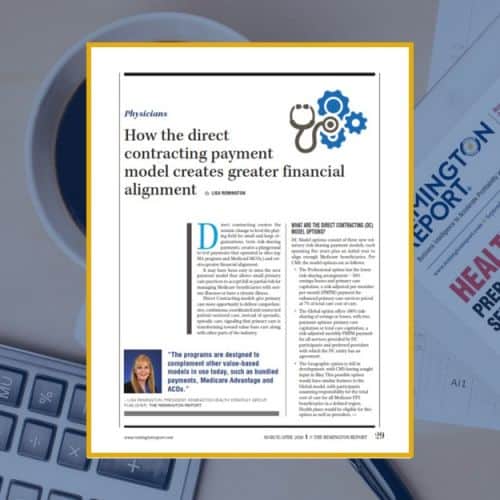 Direct contracting creates the seismic change to level the playing field for small and large organizations, tests risk-sharing payments, creates a playground to test payments that operated in silos, and creates greater financial alignment. This article is free to 1-Year Classic and 2-Year Premium subscribers.
Direct contracting creates the seismic change to level the playing field for small and large organizations, tests risk-sharing payments, creates a playground to test payments that operated in silos, and creates greater financial alignment. This article is free to 1-Year Classic and 2-Year Premium subscribers. -

This webinar is part of the six-event, on-demand webinar series: Next Generation Home Health Aide Model to Promote Growth and Partnerships
Webinar Summary
What resources can home care contribute to a successful partnership with payers? The answer: real-time data. Payers are seeking improvements in their quality measure scores to:- Provide better care to their members
- Secure high State/Federal Star Ratings
- Increase funding through better risk adjustment scores
- Qualify to earn quality incentive bonus funding
Want to purchase the entire series for $499? Click here.
- Webinar #1: The Changing Healthcare Landscape: The New Role of the Home Health Aides
- Webinar #2: How to Expand Payer Partnerships and Meet Their Goals
- Webinar #3: How to Expand the Role of Aides to be Part of an Interdisciplinary Team Member
- Webinar #4: How to Target Interventions to Improve Outcomes
- Webinar #5: How to Size-up Your Organization for Cultural Change
- Webinar #6: How to Boost Quality Scores and Performance Improvement
-

This webinar is part of the six-event, on-demand webinar series: Next Generation Home Health Aide Model to Promote Growth and Partnerships
Webinar Summary
Before you meet with a payer, it is important to establish their goals. A one size fits all solution no longer exists. Five key conversation points are identified in this webinar. We discuss:- How payer conversations are changing
- Alignment strategies with payers
- Case study: Leveraging your resources and assets
Want to purchase the entire series for $499? Click here.
- Webinar #1: The Changing Healthcare Landscape: The New Role of the Home Health Aides
- Webinar #2: How to Expand Payer Partnerships and Meet Their Goals
- Webinar #3: How to Expand the Role of Aides to be Part of an Interdisciplinary Team Member
- Webinar #4: How to Target Interventions to Improve Outcomes
- Webinar #5: How to Size-up Your Organization for Cultural Change
- Webinar #6: How to Boost Quality Scores and Performance Improvement
